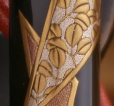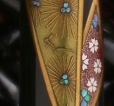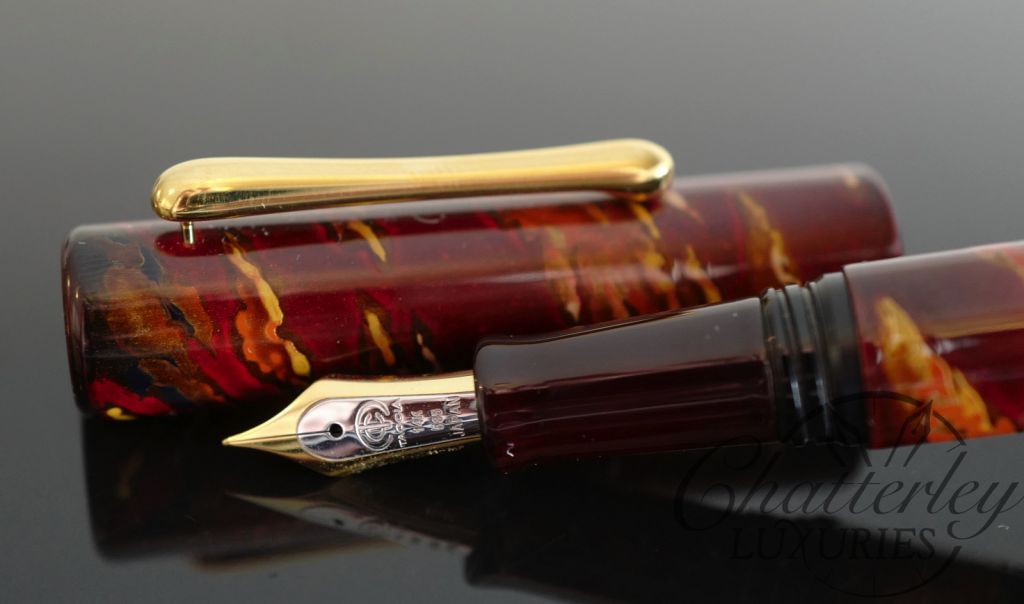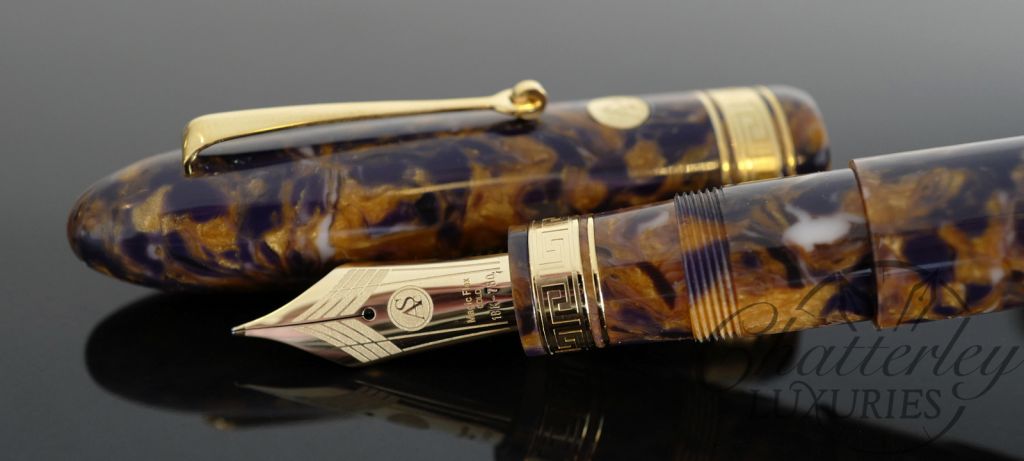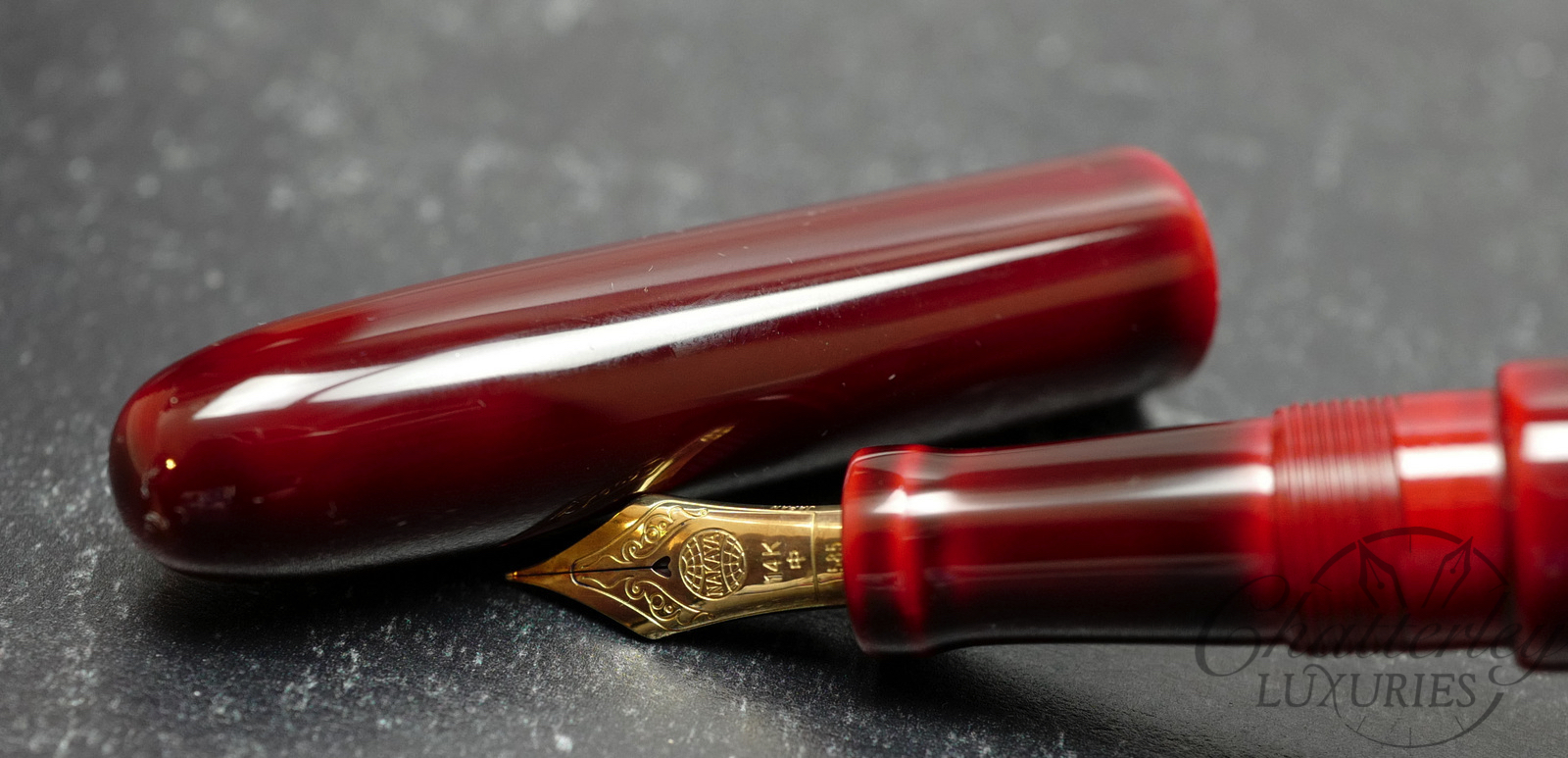Conway Stewart is working with many highly praised and recognized Maki-e artists for its 2006 collection.
Soka Monyo is the second pen in the spring collection crafted by the renowned artisan, Mr. Koichiro Okazaki.
The beauty of Maki-e depends on the craftsman’s skills: artistic design, knowledge of traditional techniques, and the ability to tell a story through the application of art. Many sought-after artisans acquire their training in their early teenage years, following in the footsteps of their parents and grandparents. A Maki-e artist’s vocation is not motivated by money, but by the pride in following a family tradition.
Mr. Koichiro Okazaki’s work name is Kogaku-san. He drew his inspiration for the design of the Soka Monyo from flowers throughout the season: sakura, wisteria and Japanese larch. They are displayed within geometric shapes, bordered in thick gold, using the striking contrast of black for the background.
The Floral Design showcases a wide range of many different methods of Maki-e art and techniques used on this bold and striking work. Tsukegaki technique (fine raised lines of lacquer, dusted with gold powder, mostly used for wave patterns), togidashi maki-e (a labor-intensive technique that results in a design completely flush with the surface, utilizing the repetition of paintings, powder sprinkling, and burnishing), taka maki-e (many thin layers of genuine urushi lacquer, with sabi, charcoal or tin powders applied over one another to create slightly raised portions), kakiwari technique (the design is left in reverse in order to reveal the underlying layer of lacquer, particularly useful for fine details such as the veining of a leaf), hira maki-e (design is drawn onto the urushi surface and, using powder sprinkling tools such as cotton, crane quills and bamboo in various sizes gold powder is sprinkled over the lacquer. The design is polished once the urushi has hardened), and shishiai maki-e (the mixed use of taka and togidashi methods).
The sakura is a well-known symbol of Japan and is the unofficial national flower. The cherry blossoms are a lasting symbol for the brief nature of life, and as such are frequently depicted in art. The cherry blossoms symbolize of a bright future. Also, their delicacy suggests purity, transience, melancholy, and it also has poetic appeal.
The Japanese follow the sakura zensen (sakura front), or cherry-blossom front on an annual basis. In Japan, nightly weather forecasts include reports on the advance as the blossoms sweep north. The blossoming begins in Okinawa in February, and typically reaches Kyoto and Tokyo in late March or early April. Then it proceeds north, arriving in Hokkaido a few weeks later. Japanese pay close attention to these forecasts, going to parks, shrines, and temples with family and friends and holding a “flower viewing party.” Hanami (flower viewing) festivals celebrate the beauty of sakura, and for many, it is a chance to relax and enjoy the beautiful view. In cities, viewing cherry blossoms in the evening (yozakura) is also popular. Against the dark sky, the cherry blossoms in full bloom are especially beautiful.
In 1912, Japan gave 3,000 sakura trees to the United States and, in 1956, provided an additional 3,800 trees to celebrate the friendship between the two countries. These trees can be seen in West Potomac Park, Washington, D.C. and have become a popular tourist attraction, especially during the annual National Cherry Blossom Festival when they reach full bloom in early spring.
Most Japanese schools and public buildings have sakura trees as part of the landscaping. Since the fiscal and school year both begin in April, in many parts of Honshu, the first day of work or school will coincide with the cherry blossom season.
The Japanese wisteria (wisteria floribunda) is a woody climbing vine that lives more than 50 years. The plant was brought from Japan to the United States in 1860 by George Rogers Hall. Since then, it has become one of the most highly romanticized flowering garden plants as well as being widely used in the art of bonsai.
The flowering habit of Japanese wisteria is spectacular. It bursts into great trails of clustered white, violet, or blue flowers in early- to mid-spring and carries a distinctive fragrance similar to that of grapes.
Japanese larch grows in the mountains of the Chubu and Kanto regions in central Honshu. A coniferous tree with needle-like leaves that turn bright yellow to orange before they fall in the autumn, it shows bare pinkish-brown shoots until the next spring. It is an important tree in forestry plantations, being grown throughout central and northern Japan, and also widely in northern Europe, particularly the British Isles.
The Soka Monyo is a wonderful symphony of art utilizing abstract designs to emphasize nature’s colors. In today’s modern living it is all too easy to get caught up in the hassle and bustle of life and work. We often forget to take a step aside to appreciate the strength of Mother Nature and the balance of harmony.Each piece carries Kogaku-san’s signature, and the coveted
Red Seal signature signifying the highest level of Maki-e art.
Soka Monyo by Mr. Koichiro Okazaki
Limited to 25 pieces worldwide
MSRP On this pen is $6400



